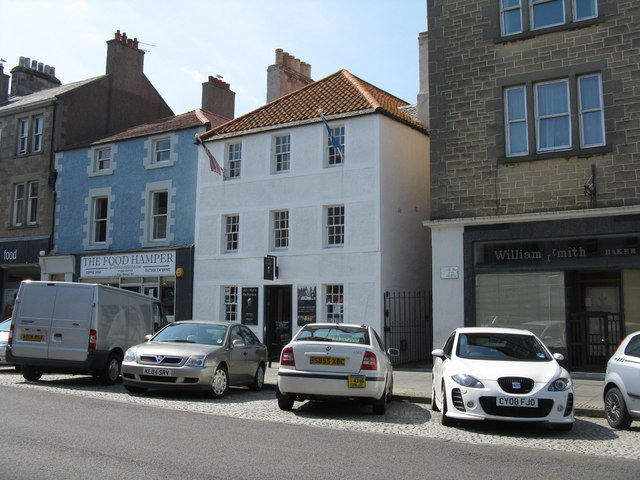The museum is housed in a traditional Scottish building that dates back to the 18th century. It provides visitors with a fascinating insight into the life and times of John Muir, as well as the natural environment that inspired him. The exhibits include original manuscripts, photographs, and personal possessions that belonged to Muir, as well as interactive displays and audio-visual presentations. Visitors can also explore the surrounding countryside, which is rich in wildlife and natural beauty.
John Muir: The Man and His Legacy
John Muir was a Scottish-American naturalist, conservationist, inventor, geologist, glaciologist, writer, botanist, farmer, artist, mountaineer, and explorer. He was born in Dunbar, East Lothian, Scotland, in 1838 and spent his early years in the area. Muir is best known for his writings on the natural world and his role in the conservation movement in the United States.
Muir’s legacy is vast, and his influence on the conservation movement cannot be overstated. He was a passionate advocate for the preservation of natural spaces and worked tirelessly to protect them. His writings, which include books such as “My First Summer in the Sierra” and “The Mountains of California,” are still widely read today and have inspired generations of conservationists.
Muir’s work helped to establish the National Park System in the United States, and he played a key role in the creation of Yosemite National Park. He was also instrumental in the establishment of the Sierra Club, which is still a leading voice in the conservation movement today.
Muir’s legacy continues to inspire people around the world to protect the natural world and to appreciate its beauty and importance. His work has had a profound impact on the conservation movement and on our understanding of the natural world, and his writings and ideas continue to be studied and celebrated today.
Birthplace: Dunbar, East Lothian
John Muir, the famous naturalist and conservationist, was born in Dunbar, East Lothian, Scotland in 1838. His birthplace is located at 126 High Street in Dunbar, which is now a museum dedicated to his life and work.
Muir’s parents, Daniel Muir and Ann Gilrye, were both born and raised in Scotland. Daniel was a successful businessman who owned a local shop, while Ann was a devoutly religious woman who instilled her faith in her children.
Dunbar, Muir’s birthplace, is a coastal town in East Lothian, located about 30 miles east of Edinburgh. The town has a rich history, dating back to the Middle Ages, and is known for its picturesque harbour, sandy beaches, and stunning cliffs.
Visitors to the John Muir Birthplace Museum can learn about Muir’s early life in Dunbar, including his love of nature and his adventures exploring the local countryside. The museum also features interactive exhibits, artifacts, and displays dedicated to Muir’s later life, including his work as a naturalist and conservationist in America.
John Muir’s Birthplace Visitor Centre
The museum is housed in the restored Georgian house where John Muir was born in 1838. The house has been beautifully preserved and features interactive displays, exhibitions, and artefacts that tell the story of Muir’s life and his passion for nature. Visitors can explore the house and learn about Muir’s childhood, his travels, and his work as a conservationist.
The centre is staffed by knowledgeable and friendly volunteers who are always happy to answer questions and provide information about the exhibits. They can also provide maps and information about the John Muir Way, a long-distance walking trail that runs from Dunbar to Helensburgh.
In addition to the museum, the centre has a gift shop where visitors can purchase nature-themed gifts and souvenirs. There is also a tea room serving a selection of hot and cold drinks and snacks.
The centre is easily accessible by car, train, or bus. There are several car parks in the town, and the centre is just a short walk from the train station and bus stops. The opening hours are from 10 am to 5 pm, Monday to Saturday, and from 12 pm to 5 pm on Sundays.
John Muir and the United States
John Muir was born in Dunbar, East Lothian, Scotland in 1838. He moved to the United States with his family at the age of 11. Muir’s love for nature began at a young age, and he spent much of his life exploring the wilderness of the United States.
Muir’s work had a significant impact on the conservation movement in the United States. He was instrumental in the creation of Yosemite National Park and the founding of the Sierra Club, a prominent environmental organization that still exists today.
Muir’s legacy continues to inspire people around the world to appreciate and protect the natural world. He is widely regarded as one of the most influential environmentalists in history.
- Muir’s love for nature began at a young age
- He was instrumental in the creation of Yosemite National Park
- Muir’s travels took him to many parts of the United States, including Wisconsin
- His experiences in Wisconsin helped shape his views on the importance of preserving nature for future generations
- Muir’s legacy continues to inspire people around the world to appreciate and protect the natural world.

